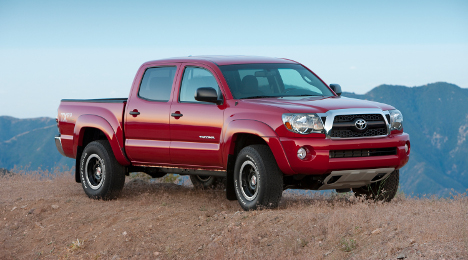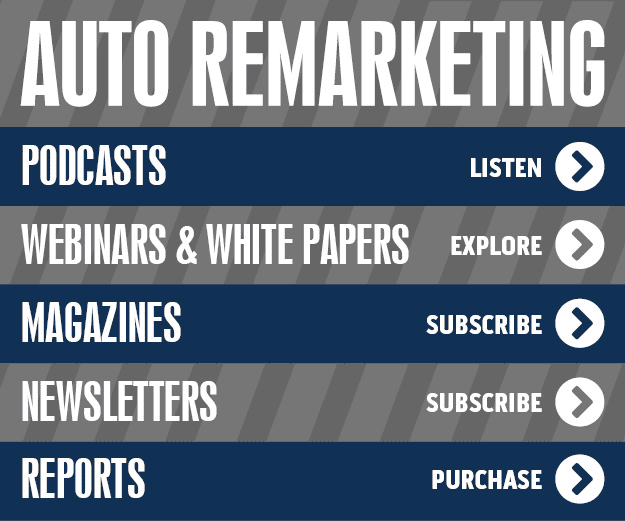Equifax determined the total dollar amount for subprime vehicle financing originated in March surged higher than any single month going back seven years.
Credit bureau analysts found that subprime auto loans in March came in at $13.1 billion, marking an 8.8-percent increase year-over-year. Equifax had to go back to March 2007 to find a figure that high. That’s when the market generated $12.5 billion in subprime paper in a single month.
SubPrime Auto Finance News caught up with Lou Loquasto, Equifax’s auto finance vertical leader, on Tuesday to get more information about why the subprime figure climbed so high.
“It’s a continuation of portfolios doing really well both from a frequency of default standpoint and also when there are repossessions. Loss severity has been low because the used-car market has been so strong. That’s the two best scenarios — fewer defaults, and when there are defaults, you get more money back for the car,” Loquasto said.
“You’ve also got this hyper-competitive environment out there,” he continued. “A lot of banks that we talk to, a lot of traditionally prime lenders, they notice low delinquencies, and they notice shrinking yields in prime and superprime so it’s natural for them to migrate downward, especially now as lenders are getting more sophisticated. When they do migrate downward a little bit, they’re doing it with their current customers. If you’re a bank or credit union, they’re actually building into their models a little more leniency when they are lending to their own customers because they know that overall they will perform better than a customer that doesn’t do business with the bank or credit union.”
Loquasto also referenced the retail sales performance the industry posted back in March. CNW Research indicated that retail used vehicle sales jumped almost 50 percent month-over-month in March as severe weather conditions eased.
“We had kind of a perfect storm of a lot good trends all hitting at the same time,” Loquasto said.
While the total dollar amount of subprime financing is at historic highs, Equifax indicated the average loan amount per customer remains lower than the high point established seven years ago. The March level came in at $17,360, much higher than the low point of $14,563 set in March of 2010, but still below the March 2007 reading of $19,292.
Loquasto doesn’t expect lenders will be pushing individual vehicle loans to subprime customers to levels close to $20,000 for a couple of reasons.
“One, income really isn’t growing for these customers so lenders are pretty disciplined when it comes to things like payment-to-income ratios. That’s why I don’t think you’re going to see a dramatic increase in subprime average loan size,” he said.
“Even to mitigate that payment-to-income ratio to keep payments affordable, lenders are more likely as you’ve seen to increase term length than they are the loan size for customers,” he continued.
Equifax’s data showed that the significant amount of vehicle loans — especially to subprime buyers — continues to fall in the range between $10,000 and $15,000. Loquasto emphasized that’s what differentiates vehicle lending from mortgages.
“Auto might have gotten a little aggressive before the crisis,” Loquasto said. “Back then auto lenders still weren’t giving someone a $30,000 car when they couldn’t afford it. By comparison (mortgage companies) were giving someone a $400,000 house when they couldn’t afford it.
“It goes back to overall affordability. Since incomes haven’t increased significantly for customers in this segment, the customers and the lenders are trying to keep loans with their budgetary constraint,” he continued. “They’re buying used cars for the most part. Even the used cars they’re buying now ranging from $10,000 to $15,000 is an upgrade from the 10-, 12- or 14-year-old vehicle they were driving.
“Customers and lenders are doing a good job of staying within budgetary constraints and not trying to get a customers into a $25,000 car when they can only afford a $15,000 car,” Loquasto went on to say.
And one more point about affordability. Loquasto mentioned the workforce solutions division at Equifax is becoming busier as more lenders are using more sophisticated tools to verify income. Equifax currently obtains income and other employment data from 80 percent of Fortune 500 companies, according to Loquasto.
“As we continue to grow our workforce solutions database, and we continue to increase the number of customers that we can tell lenders this is exactly how much this customer makes, it gives lenders more confidence in that affordability component,” he said.
“To a large degree, lenders are more confident that income number they’re underwriting off of is a reliable number versus in the past you’re having to either trust the dealer or having to get paystubs every time,” Loquasto went on to say.
Loquasto wrapped up his conversation with SubPrime Auto Finance News by giving an overall assessment of the market as it nears the second half of the year.
“What jumped out at me is kind of the stabilization of things,” Loquasto said when reviewing all of the March data. “If you look at the swings from 2005, 2006 and 2007 to down being down in 2008, 2009, 2010 and 2011 to being back up in 2012 and 2013, now we’re seeing just a nice steady consistent lending environment.
“Sure, it’s hypercompetitive and we’ve got losses that are historically low and the used-car market that’s historically high. But it seems like a lot less volatility in how the lenders are doing business,” he added.
During the first quarter of its 2015 fiscal year, CarMax Auto Finance originated $20.5 million of loans — representing 0.8 percent of retail unit sales for the timeframe — through its program for customers who typically would be financed by the company’s third-party subprime providers.
As of May 31, the company tabulated that a total of $29.6 million of loans had been originated through its special subprime financing program.
“We’ve always talked about the fact that we want to make sure our customers have access to credit at all kinds of different scales of credit. And if you look at our applicant flow, we’re still at 90 percent of our applicants are getting approval of some kind,” CarMax president and chief executive officer Tom Folliard said during the company’s conference call last week.
Folliard also reported that Q1 income at CarMax Auto Finance increased 8.7 percent to $94.6 million, driven by an increase in average managed receivables, partly offset by a lower total interest margin.
The company’s average managed receivables grew 20.1 percent to $7.39 billion as CarMax Auto Finance total loan originations have grown in recent years, according to the company.
Folliard also pointed out the total interest margin — which reflects the spread between interest and fees charged to consumers and the company’s funding costs — declined to 6.7 percent of average managed receivables in the first quarter from 7.2 percent in the first quarter of the last fiscal year.
Investment analysts wanted to know more details on the impact this subprime program might have on the performance of CarMax Auto Finance.
“At this point it’s little early in the process with the subprime and the expected losses are still high,” CarMax executive vice president and chief financial officer Tom Reedy said. “It’s actually a little bit of a drag on CAF earnings, but it’s nothing material. We have to reserve 12 months of losses out the gate as we originate those loans. And with those loans having a higher expected loss rate than our regular portfolio, until we start building up a critical mass, it’s actually going to be a little bit of a drag on our earnings, but it’s very minimal and nothing to report.
“As we go forward, it may have some impact on the loss provision, our average contract rate and the overall allowance,” Reedy continued. “And to the extent that it does become something that merits calling out, we’ll give you that color.”
Whether it’s through its own program or third-party financing, CarMax executives are seeing some slowdown in the amount of subprime paper that’s going into portfolios connected by vehicles retailed by their company.
“We told you last year at this time that our subprime providers had got a little more aggressive,” Folliard said. “We told you in the third quarter that they had pulled back a little bit. It was 21 percent last year when we thought people would be a little bit more aggressive, and we saw a little pull back. We were flat in the fourth quarter. We’re slightly down in this quarter. It’s not that surprising based on what we have told everybody.
“But in terms of where it comes out long term, it’s not really within our control,” Folliard added.
Later during the conference call, Reedy offered his assessment of subprime financing behavior.
“Subprime penetration is going to be a combination of factors driving it. One is the credit coming through the door, and then another is the behavior of the other lenders in the system,” Reedy said. “Over time we worked to try to build, as Tom mentioned, a broad spectrum of lenders so that customers have access to credit and I think we are very happy with the partners we have today. We’ve got nothing but praise for them.
“You look at cash penetration, it was flat. Subprime was down a little bit. We did see a lift in sales that were funded by sources outside of our system. We did see a lift in sales funded by our Tier 2 partners which means they stepped up and took some customers that they may have declined in the past. So Tier 3 behavior is going to be a combination of what’s coming through the door and what makes it down to them, and finally their behavior and their credit appetite,” Reedy continued.
“Our stores’ ability to convert ones we have approvals to work with and the higher, the better the quality of approval, in other words the lower the down payment, the better chance we have a conversion,” Reedy went on to say. “So I would expect over time those things are going to be constantly moving as lenders continue to tweak their scorecard and make adjustments based on the performance of the portfolio that they have originated.”
Equifax shared some details of a recent conversation the credit bureau had with the National Independent Automobile Dealers Association leading up to NIADA’s annual convention in Las Vegas. They touched on a wide array of issues, including access to financing for subprime borrowers.
Jennifer Reid, senior director of product marketing at Equifax, chatted with Scott Lilja, senior vice president of member services, to discuss the many challenges facing today’s independent dealers.
Reid: What obstacles and challenges do today’s NIADA members face?
Lilja: One challenge that's come up over the last five years has been access to clean, retail-ready inventory. When new car sales dropped off the cliff in '08 and '09, trade-ins fell, so there was no leasing activity — no off-lease returns. Leasing dried up and finance companies became very conservative and less aggressive in the leasing market. Used-vehicle valuations dropped, which put dealers underwater when those leases were turned in.
We saw a dearth of available inventory in auctioneering and dealer-to-dealer wholesale activity. So, dealers were really struggling to find the cars their customers wanted. It's starting to come back slowly this year, and by the end of the year, we'll have about 2.5 million off-lease units coming back. Next year, that will ramp up to about 3.5 million, followed by 4.5 million by 2016. New car sales have come back, increasing trade-in activity.
Reid: What about franchise dealer activity in the used retail market?
Lilja: Franchise dealers have really stepped up their activity around the older retail vehicles — five-year, 70,000-mile units. Used cars went from being a “stepchild” at new-car dealerships to a real ramp-up in activity and support in the last four to five years. Many of their new-car customers took a major hit in their credit profiles during the last downturn, so they migrated to older used cars. Using inventory management tools, many new-car franchise dealers woke up to the sizable gross margins in this segment. With all the transparency on the Internet about new-vehicle pricing, it has become very difficult to stop the erosion in new-car retail margins.
Reid: Has access to quality auto-finance resources improved?
Lilja: It's improved with the independent subprime providers. But the big national providers have pulled back and are much more selective and targeted as to who they’ll do business with. Here, Equifax dealer tools can help with risk mitigation, turning auto-finance paper more quickly, and potentially attracting additional auto finance resources to a dealership.
Toyota Financial Services and Lexus Financial Services expanded of their longstanding military rebate program this week.
Officials highlighted they now offer a $500 rebate on all new Toyota and Scion vehicles, and a $750 rebate on all new and certified pre-owned Lexus vehicles.
Established to thank troops for their service and dedication to defending the country, and to help them afford the car or truck they want, TFS vice president of product and marketing Karen Ideno explained the program has offered rebates for eligible military personnel and inactive reserves since April of 2007.
Ideno mentioned the program has now been expanded to include retirees and veterans within a year of their honorable discharge, and household members of eligible qualifying military personnel.
“Toyota Financial Services is incredibly grateful to our troops, and strongly supports the Armed Forces,” Ideno said. “An important part of that is to also support the loved ones who stand behind those service members deployed overseas. We hope this program makes life a little easier for them, and helps them get the vehicle of their choice.”
To take advantage of the rebate, individuals must:
— Provide verifiable proof of military status or active service at the time of purchase
— Receive a qualifying salary
— Receive credit approval by Toyota Financial Services or Lexus Financial Services through a Toyota, Scion, or Lexus dealer
“When service members come into the dealership, you really want to do everything you can to help them drive away in that car or truck they want,” said Danny Renshaw, owner of Toyota of Hopkinsville near Fort Campbell, Ky.
“With Toyota’s military rebate program, we have a way to do just that; a way to say thank you, and give back to those who continue to give us so much. It’s the right thing to do,” Renshaw went on to say.
AFS Acceptance recently appointed a former executive from Consumer Portfolio Services to be the company’s new vice president of loan servicing.
Tapped for the position was Eric Van Eaton, who will lead all aspects of loan servicing for AFS Acceptance, including collections, customer service, remarketing and post charge-off recovery.
“Eric is an outstanding leader, with a proven track record of managing large portfolios,” AFS Acceptance president Scot Seagrave said. “We’re excited to have him join our team and we look forward to utilizing his expertise to make AFS an even better company.”
Prior to joining AFS, Van Eaton spent 12 years at Consumer Portfolio Services, first as call center manager and more recently as vice president of servicing in Orlando, Fla., where he was responsible for operations in the company’s regional call center.
Van Eaton also served as branch manager for Mercury Finance and Security Finance.
Before working in the finance industry, Van Eaton served in tactical intelligence for the U.S. Army.
TransFirst, a provider of transaction processing services and payment enabling technologies, and the National Independent Automobile Dealers Association announced that they have agreed to a new, exclusive relationship for payment processing solutions.
Officials explained that TransFirst first acquired a long-standing non-exclusive agreement to provide processing solutions to NIADA members, which has now become exclusive.
Now TransFirst is gearing up to provide the same level of service plus additional enhancements, including a full suite of credit card processing services, American Express Card transactions at the same rate as other payment cards, U.S.-based live customer support available any time and state-of-the-art payment processing software and equipment.
“TransFirst is excited to expand upon our relationship with NIADA with this exclusive agreement to deliver cutting-edge payment processing solutions to its members, and we look forward to a long and mutually beneficial relationship with them,” TransFirst president and chief executive officer John Shlonsky said.
NIADA vice president of member services Scott Lilja added, “TransFirst is a highly valued, long-time NIADA member benefit provider who has exceeded our expectations across all aspects of what we look for in a valued member benefit provider. They have made substantial investments in our program to ensure first-class service, best-in-class merchant services solutions and leading-edge technology services for our members to take advantage of.
“In recognition of these accomplishments and their long-time commitment to excellence within our member benefit program, we are honored to enter into an exclusive NIADA merchant services provider alliance with them,” Lilja went on to say.
Ally Financial chief executive officer Michael Carpenter likes the position the company currently has in terms of where its business development originates. Rather than strictly being a captive servant to an automaker, Carpenter prefers the current situation where Ally can provide a wide array of services directly to dealers, including consumer financing, inventory floor plans and other F&I tools.
Carpenter explained how Ally forged its way into this position this week during the Morgan Stanley Financials Conference in New York.
“We are not a bank that approaches this business with one or two commodity lines, which is mostly what you see out there,” Carpenter said. “While we have the benefit of having captive roots, and we describe ourselves as being in and of the industry, we have fundamentally repositioned the company since its days as a captive. We are no longer reliant on a manufacturer to give us business. We go out in the marketplace every day and earn our business both from OEMs and from the more than 16,000 dealers that we do business with.
“We would describe our business model as uniquely relationship oriented and dealer centric. Many of these relationships span generations,” he continued. “In fact, our average dealer relationship is 15 years. Our business model is centered around providing a premium level of service and innovation in the market as well as the fact that we have every product across the spectrum that meets the needs of dealers and their customers. We’re not just focused on one or two products. We are focused on being embedded in every way the dealers run their business. We want to be their principle and most important financial services provider.”
Carpenter continued his presentation by highlighting several achievements that reinforced Ally’s business plan. He mentioned more than 5,200 dealers use four or more of Ally’s products, which beyond consumer financing of new and used vehicles and commercial loans, also includes the wholesale resources available at SmartAuction, insurance products and service contracts as well as vehicle leasing.
The Ally boss called it the “all-in relationship” dealers are choosing to have with the company.
“Unlike some of our competitors that are high-tech and no-touch, we are high-tech and high-touch, meaning we also have 2,400 folks whose job it is day in and day out to be on the phone and in the dealerships making sure that Ally is doing whatever we can to help the dealer be successful and sell more vehicles,” Carpenter said.
“We can dial up the use of technology where we think it makes sense, but we believe fundamentally that this is a relationship business, and having boots on the ground and someone you trust, particularly as an individual entrepreneur that can help you make a deal, is fundamental to the success of our business,” he went on to say.
Beyond providing those products to move metal, Carpenter pointed out Ally Dealer Rewards Program reinforces the breadth and depth of those “all-in relationships.” If a dealer enjoys success using Ally products, the company cuts the dealer principal a check as an add-on bonus.
“That is very meaningful to the dealer principal,” Carpenter said.
Later in his presentation, Carpenter noted another area where he insisted Ally is different from other commercial banks or captive finance companies — the growth in used-vehicle financing originations.
Experian Automotive reported that Ally stood at No. 2 with a market share level at 3.92 percent. Carpenter also highlighted that Ally’s originations from dealers not connected with either General Motors or Chrysler has grown from 9 percent in 2011 to 19 percent in the first quarter of this year.
“As a captive, you don’t care so much about used vehicles. You’re concerned about moving metal for the manufacturer,” Carpenter said. “But as an independent company, we recognized that the used business is bigger than the new-vehicle business. In five years, we’ve gone from nowhere to being the No. 2 player in the business. This is a better business from a risk-reward point of view. This is a business where our knowledge in the used-car market at SmartAuction really plays into our strengths.”
Carpenter wrapped up the portion of his presentation that focused on the auto finance portion of Ally’s business with one more closing thought about how the company emphasizes its connection to dealers.
“We try to provide the dealer with every product that is critical to them to run their business and helps them sell more vehicles and helps them make more money,” Carpenter said. “We are very-well positioned for the future in auto finance.”
For dealers and finance companies that specialize in working with consumers with credit scores below 550, May turned out to be a pretty good month for used-vehicle sales.
CNW Research found that turns to buyers in this credit segment increased by more than 9 percent year-over-year as the industry posted 734,165 retail used sales to consumers typically considered to be either subprime or deep subprime.
Last month’s performance was even more positive for buy-here, pay-here dealers as CNW determined these operations saw their sales jump 20.9 percent in May versus the same month last year.
In a used-vehicle market that was static overall, franchised dealers increased their used sales more than 4 percent from a year ago, moving 1.42 million pre-owned units off their lots in May.
CNW pegged May’s overall used sales total at 4.39 million units. This total — which includes numbers from franchised and independent dealers, as well as private-party transactions — was essentially unchanged from May 2013, CNW said.
Used sales were up almost 11 percent month-over-month.
As franchised dealers increased their used sales 4.3 percent year-over-year, independents sold 1.42 million used cars for a 3.4-percent gain.
There were 1.36 million casual sales, down from 1.48 million in May 2013.
Average used-car transaction prices for franchised dealers came in at $15,467, a 25.5-percent year-over-year increase driven by what CNW described as a newer and pricier inventory mix.
Meanwhile, transaction prices for independents fell from $7,218 to $6,883.
Prices in private-party deals climbed 8.3 percent to $7,519.
CNW said there was a 15-percent month-over-month and year-over-year increase in the total value of all monthly used sales, which it pinpointed at close to $45 billion.
Staff writer Joe Overby contributed to this report.
Driven in part by the increasing retail price for vehicles, the latest Equifax National Consumer Credit Trends Report showed the total outstanding balance of current auto loans reached a new record high in April.
Equifax determined outstanding balances closed April by rising 10.8 percent from the same time a year earlier to come in at $884 billion.
Through February, analysts indicated that new credit given by finance companies for vehicles totaled $69.6 billion, marking an eight-year high and an increase of more than 13 percent year-over-year.
Furthermore, Equifax said that serious delinquencies represent less than 1 percent of total outstanding balances, the lowest level in more than five years.
“Auto lending continues to lead the recovery,” Equifax chief economist Amy Crews Cutts said. “By any metric you consider, whether new originations, total balances or low delinquency levels, the auto sector is running on all cylinders.
“The boom in auto purchases ended in 2004, and people are now thinking about replacing their jalopies, as the average age of a car on the road today is over 11.4 years old and the financing terms are favorable for those with decent credit histories,” Crews Cutts said.
And part of that fuel for pushing those outstanding balances higher is the retail prices consumers are paying — even though incentives were on the way up last month, as average transaction prices were reported to have fallen slightly from April.
According to TrueCar.com data, the average incentive spending for light vehicles in May was $2,677, up $17 (0.7 percent) from May 2013 and up $91 (3.5 percent) from April.
TrueCar estimated the ratio of incentive to average transaction price for light vehicles was 8.7 percent in May 2014, up 1.1 percent from May 2013 and up 7.5 percent from April 2014.
Perhaps a result of ramped up incentives, both TrueCar and Kelley Blue Book reported a slight decline in transaction prices from April.
KBB reported the estimated average transaction price for light vehicles in the United States was $32,307 in May, which is up $635 from May 2013 and down $79 from April.
“Small and midsize car share has declined slightly, as car shoppers opt for small and midsize crossovers, helping boost this month’s average transaction price,” said Karl Brauer, senior analyst for Kelley Blue Book. “Benefitting from strength among the crossover segment, the Acura MDX now comprises more than a third of Acura’s sales, boosting the brand’s transaction prices 5.5 percent year-over-year and helping keep Honda’s overall ATP flat.”
According to TrueCar data, the average transaction price was $30,646 in May 2014, down $149 from May 2013 and down $1,174 from April.
“Industry-wide, we saw average transaction prices contract slightly in May,” said Larry Dominique, president of ALG and executive vice president of TrueCar. “Conversely, Chrysler and GM were able to command higher prices, while shrinking their incentive spend-to-price ratio. This is a positive brand indicator for the two automakers.”
Highlighting transaction prices for individual brands, KBB analysts pointed out Volkswagen performed particularly well in May.
“Revealing a healthy average transaction price increase this month is Volkswagen Group, up 5.5 percent from last year,” said Alec Gutierrez, senior analyst for KBB. “However, this is due to a decrease in the share of Volkswagen brand sales and a corresponding increase in Audi share. Following the re-introduction of the entry-level A3 sedan, Audi’s average transaction price is down 2.5 percent year-over-year, while the Volkswagen brand is relatively flat.”
For domestic brands, Chrysler Group reported the biggest gain in average transaction price, reporting a 4.8 percent bump up from May 2013.
Staff writer Sarah Rubenoff contributed to this report.
As the subprime financing market continues to expand, Experian Automotive determined that loan terms continued to lengthen with the average automotive loan term reaching 66 months for the first time.
According to Experian’s latest State of the Automotive Finance Market report, loan terms in the first quarter of this year reached the highest level since the company began publicly reporting the data in 2006.
The analysis also showed that loans with terms extending out 73 to 84 months made up 24.9 percent of all new-vehicle loans originated during the quarter, growing 27.6 percent since the first quarter of last year.
The average amount financed for a new vehicle loan also reached an all-time high of $27,612 in Q1 2014, up $964 from the previous year. In addition, the average monthly payment for a new-vehicle loan reached its highest point on record at $474 in Q1 2014, up from $459 in Q1 2013.
“As the cost of purchasing a new vehicle continues to rise, consumers clearly are stretching the loan term to help lower monthly payments, keeping them at a manageable level,” Experian senior director of automotive credit Melinda Zabritski said.
“The benefit of a longer-term loan is the lower monthly payment; however, the flip side of that is consumers can find themselves paying more in interest or being upside-down on their loan if they seek to trade their vehicle in early. It is definitely a choice that consumers will want to weigh carefully before making a final purchasing decision,” Zabritski continued.
Experian indicated that consumers also continued to lease new vehicles at record levels.
Of all new vehicles financed, 30.2 percent were leased in Q1 2014, compared to 27.5 percent in Q1 2013. Interestingly, of all new vehicles sold (whether financed or purchased in cash), a staggering one in four, or 25.6 percent, were leased in Q1 2014, compared to 22.9 percent in Q1 2013.
Overall, loans and leases for new vehicles were easier to obtain in Q1 2014. For new vehicle loans, the average credit score was 714, down from 722 in Q1 2013. For leases, the average credit score was 721 in Q1 2014, compared to 731 in Q1 2013.
“Over the last several quarters, leasing has come back as a very desirable option for consumers,” Zabritski said.
“Whether they are interested in getting the latest and greatest models or simply do not want to commit to a long-term purchase, consumers are leasing new vehicles in greater numbers than ever before,” she continued. “However, what they need to remember is that without good credit, it may be more difficult to get a lease, and that leases have mileage caps so they need to make sure their lifestyle fits the leasing requirements.”
Meanwhile, Experian noticed that subprime financing roses for new vehicles but dropped for used models.
Market share for nonprime, subprime and deep subprime new vehicle loans rose slightly in Q1 2014 to 34.34 percent from 33.68 percent in Q1 2013.
For used vehicles, nonprime, subprime and deep subprime loans accounted for 64.2 percent of all loans, down 2.6 percent from 65.91 percent in Q1 2013.
Zabritski pointed out four other trends from the latest data, including:
—The average credit score for a used vehicle loan in Q1 2014 was 641, up from 637 in Q1 2013
—Average monthly payments for used vehicles rose from $348 in Q1 2013 to $352 in Q1 2014
—New vehicle interest rates rose from 4.47 in Q1 2013 to 4.54 percent in Q1 2014
—Used vehicle interest rates rose from 8.75 percent in Q1 2013 to 9.01 percent in Q1 2014












